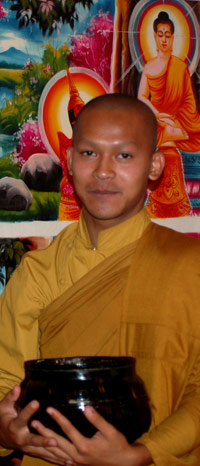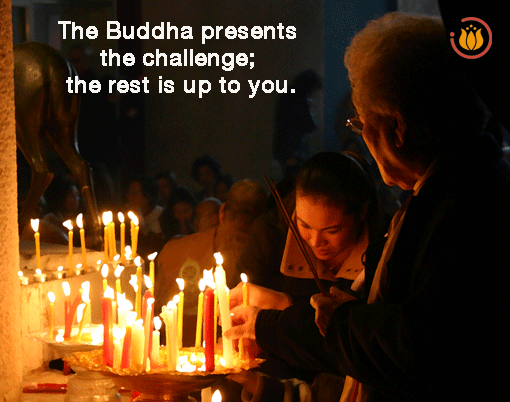THERAVADA COMES WEST
by John Bullitt
Until the late 19th century, the teachings of Theravada were little known outside of southern Asia, where they had flourished for some two and one-half millennia. In the past century, however, the West has begun to take notice of Theravada’s unique spiritual legacy in its teachings of Awakening. In recent decades this interest has swelled, with the monastic Sangha from various schools within Theravada establishing dozens of monasteries across Europe and North America. Increasing numbers of lay meditation centers, founded and operated independently of the monastic Sangha, strain to meet the demands of lay men and women — Buddhist and otherwise — seeking to learn selected aspects of the Buddha’s teachings.

Spiritual teachings of every description inundate the media and the marketplace today. Many of today’s popular spiritual teachings borrow liberally from the Buddha, though only rarely do they place the Buddha’s words in their true context. Earnest seekers of truth are therefore often faced with the unsavory task of wading through fragmentary teachings of dubious accuracy. How are we to make sense of it all?
Fortunately the Buddha left us with some simple guidelines to help us navigate through this bewildering flood. Whenever you find yourself questioning the authenticity of a particular teaching, heed well the Buddha’s advice to his stepmother:
The teachings that promote the qualities of which you may know, ‘These qualities lead to passion, not to dispassion; to being fettered, not to being unfettered; to accumulating, not to shedding; to self-aggrandizement, not to modesty; to discontent, not to contentment; to entanglement, not to seclusion; to laziness, not to aroused persistence; to being burdensome, not to being unburdensome’: You may definitely hold, ‘This is not the Dhamma, this is not the Vinaya, this is not the Teacher’s instruction.’
As for the teachings that promote the qualities of which you may know, ‘These qualities lead to dispassion, not to passion; to being unfettered, not to being fettered; to shedding, not to accumulating; to modesty, not to self-aggrandizement; to contentment, not to discontent; to seclusion, not to entanglement; to aroused persistence, not to laziness; to being unburdensome, not to being burdensome’: You may definitely hold, ‘This is the Dhamma, this is the Vinaya, this is the Teacher’s instruction.’

The truest test of these teachings, of course,
is whether they yield the promised results in the crucible of your own heart.
The Buddha presents the challenge;
the rest is up to you.
Copyright © 2005 John Bullitt
For free distribution. This work may be republished, reformatted, reprinted, and redistributed in any medium. It is the author’s wish, however, that any such republication and redistribution be made available to the public on a free and unrestricted basis and that translations and other derivative works be clearly marked as such.
www.buddhachannel.tv





Comments are closed.